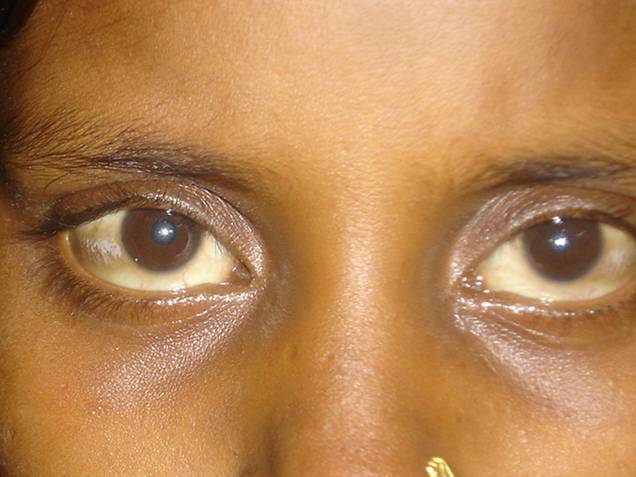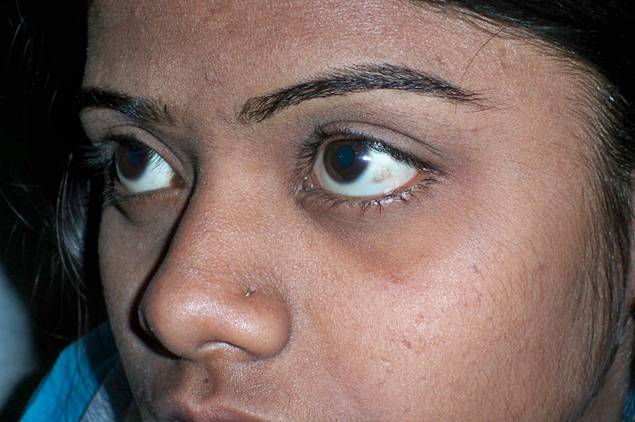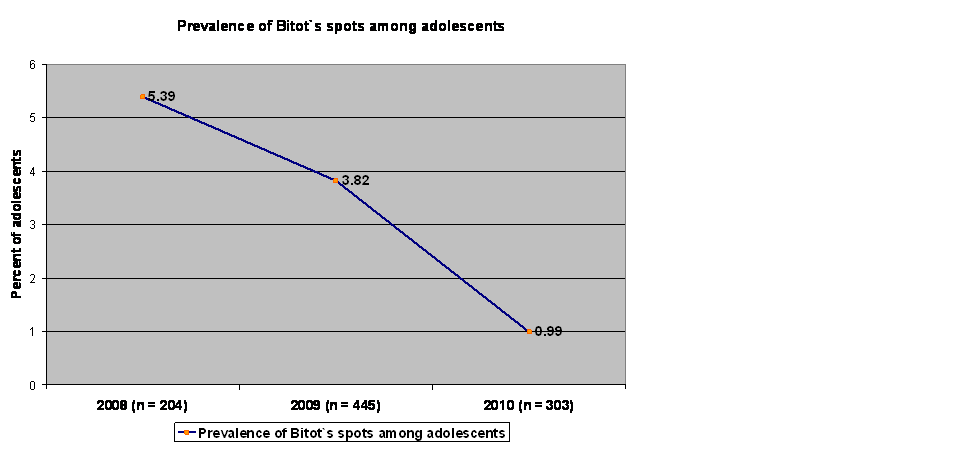 |
|
howrahtb
|
|
An adolescent with Bitot`s spots The extent of Vitamin A-Deficiency among mothers, children and adolescents in southern West Bengal, India, is not well known. A level of Vitamin A-Deficiency that reaches public health significance would have implications for health care programmes for mothers, children and adolescents in this area. To get an impression of the prevalence of Vitamin A-Deficiency in the area, in which the primary health care programme of our NGO operates, we examined the adolescents (11 – 16 yrs. of age) attending our primary health care centers for the presence of Bitot`s spots. Among 952 consecutively examined adolescents, 31 (3.26 %) had Bitot`s spots.
The reason for this relatively high frequency of Bitot`s spots among adolescents is not clear, although similar observations have been made earlier by other investigators.1
The graphic underneath shows the regredient prevalence of Bitot`s spots among adolescents in the years 2008 – 2010. This survey has a number of limitations. As the NGO running the primary health care-centers intentionally selects high-risk slums with obvious poverty as its project areas, the results reflect the extent of Vitamin A-deficiency among adolescents of the poor socioeconomic subgroup of the population of southern West Bengal only. These results cannot be generalized to the overall adolescent population of southern West Bengal. Furthermore, this is not a door-to-door-survey of the resident population of the selected poor areas, but a survey among adolescents attending primary health care-centers for various, mostly minor, ailments. Results may therefore not even be representative for the overall adolescent population of the selected poor areas. However, it is useful to know which extent of Vitamin A-deficiency can be expected among adolescents attending primary health care-centers in impoverished areas of southern West Bengal.
1 – Singh V, West KP. Vitamin A deficiency and xerophthalmia among school-aged children in Southeastern Asia. Eur J Clin Nutr 58: 1342-1349
|
Copyright © 2010-2015 - www.howrahtb.com. All Rights Reserved
Site best viewed in IE 7 (1024*768) and above. If you have an older version of Internet Explorer, please upgrade your browser.


